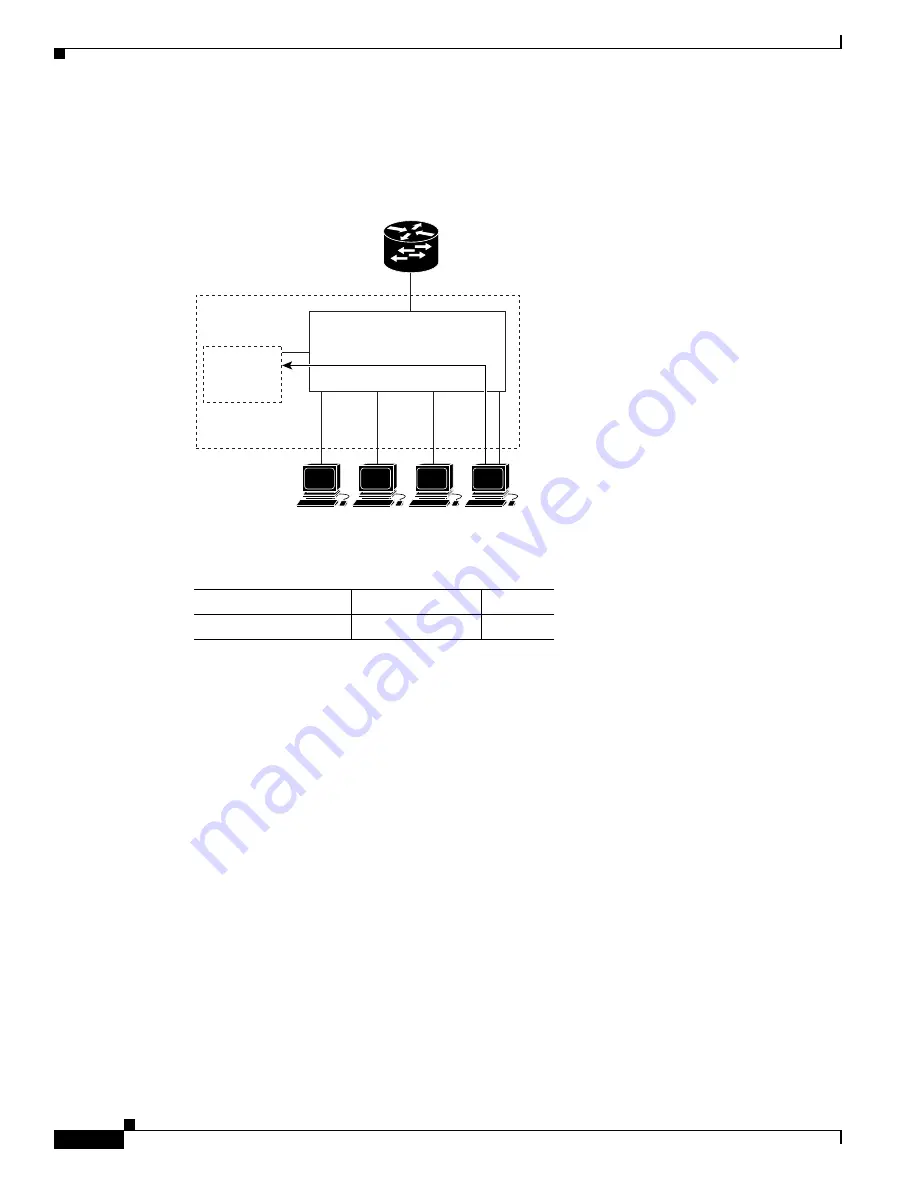
16- and 36-Port Ethernet Switch Module for Cisco 2600 Series, Cisco 3600 Series, and Cisco 3700 Series
Feature Overview
38
Cisco IOS Release 12.2(2)XT, 12.2(8)T, and 12.2(15)ZJ
Figure 17
Second Host Joining a Multicast Group
Leaving a Multicast Group
The router sends periodic IP multicast general queries, and the switch responds to these queries with one
join response per MAC multicast group. As long as at least one host in the VLAN needs multicast traffic,
the switch responds to the router queries, and the router continues forwarding the multicast traffic to the
VLAN. The switch only forwards IP multicast group traffic to those hosts listed in the forwarding table
for that IP multicast group.
When hosts need to leave a multicast group, they can either ignore the periodic general-query requests
sent by the router, or they can send a leave message. When the switch receives a leave message from a
host, it sends out a group-specific query to determine if any devices behind that interface are interested
in traffic for the specific multicast group. If, after a number of queries, the router processor receives no
reports from a VLAN, it removes the group for the VLAN from its multicast forwarding table.
Global Storm-Control
Global storm-control prevents switchports on a LAN from being disrupted by a broadcast, multicast, or
unicast storm on one of the interfaces. A LAN storm occurs when packets flood the LAN, creating
excessive traffic and degrading network performance. Errors in the protocol-stack implementation or in
the network configuration can cause a storm.
Table 8
Updated Multicast Forwarding Table
Destination Address
Type of Packet
Ports
0100.5e01.0203
!IGMP
1, 2, 5
Host 1
Host 2
Host 3
Host 4
1
2
3
4
5
88848
Multicast
Forwarding
Table
CPU port
Cisco router with Ethernet
switch network module
















































